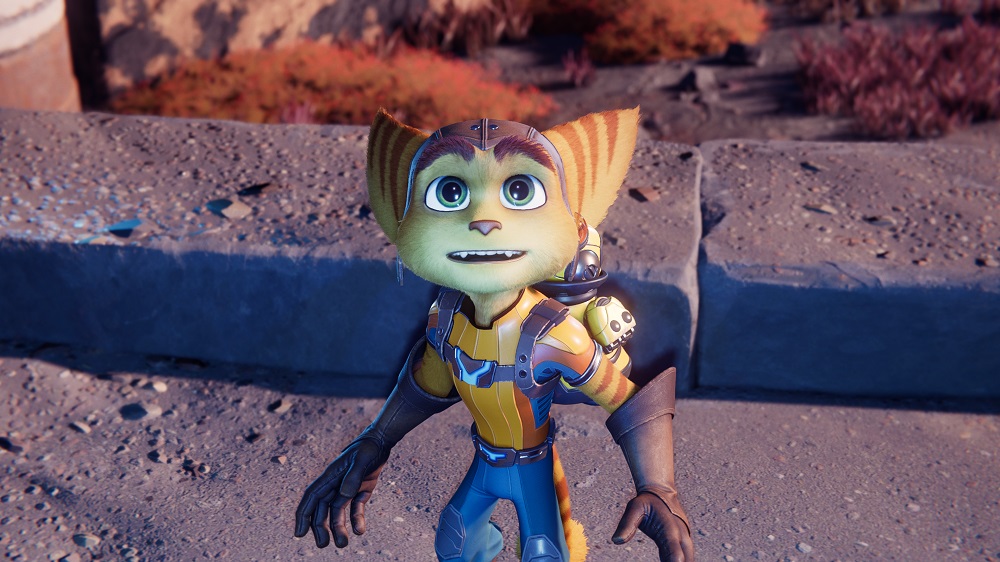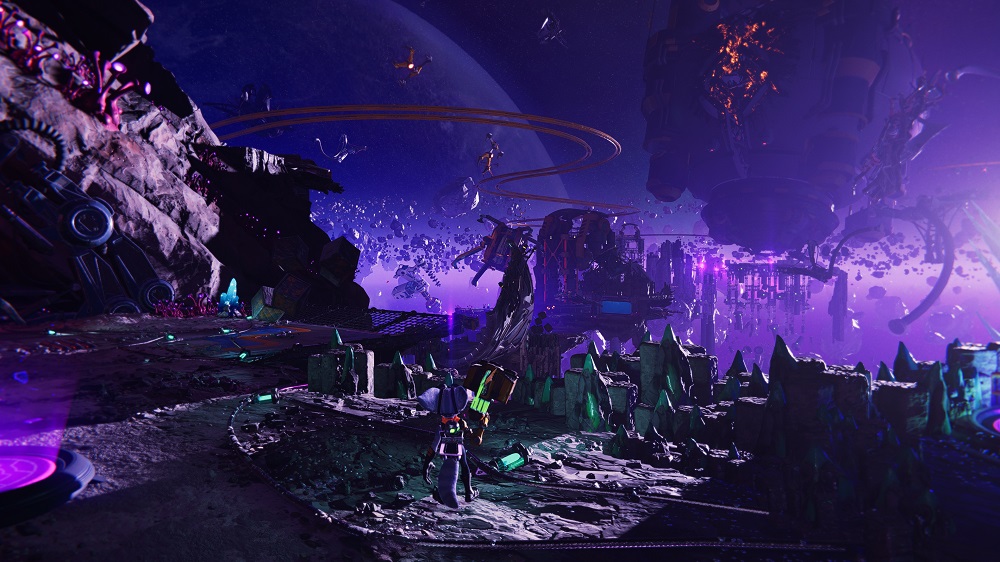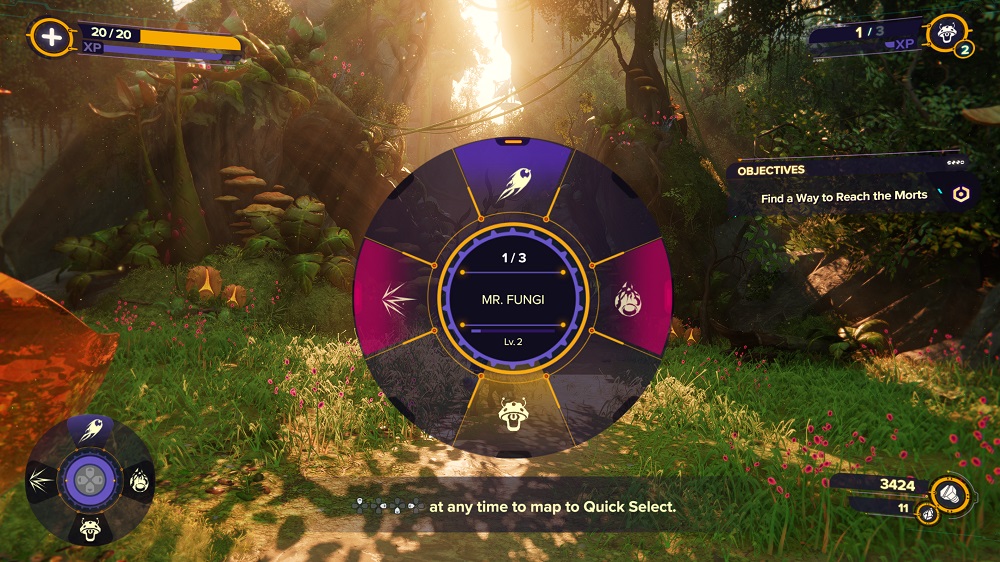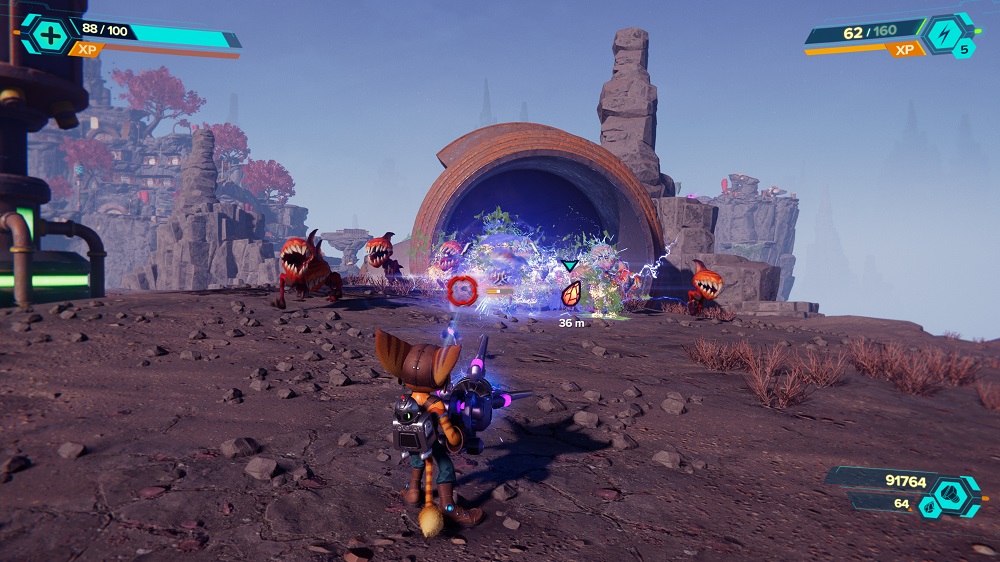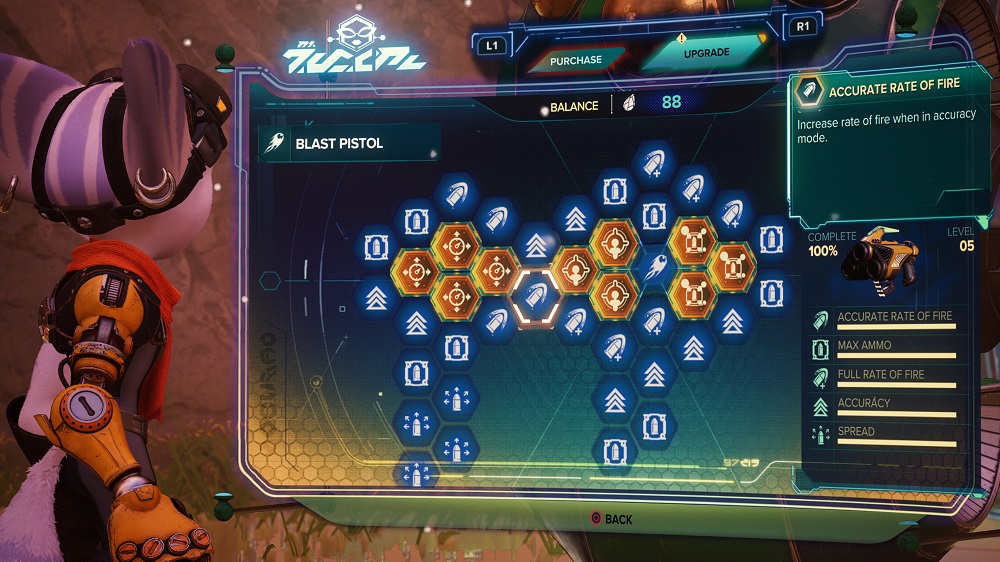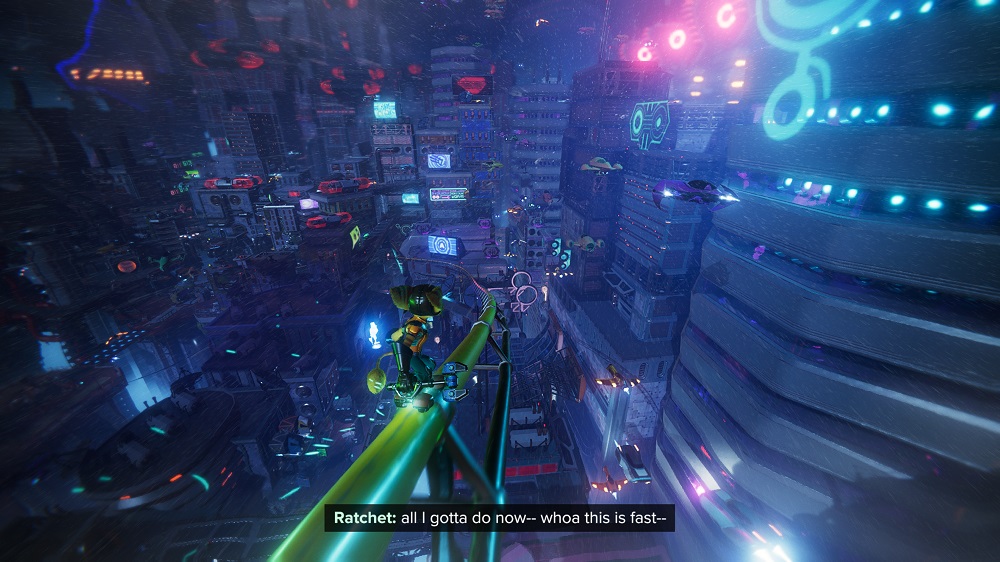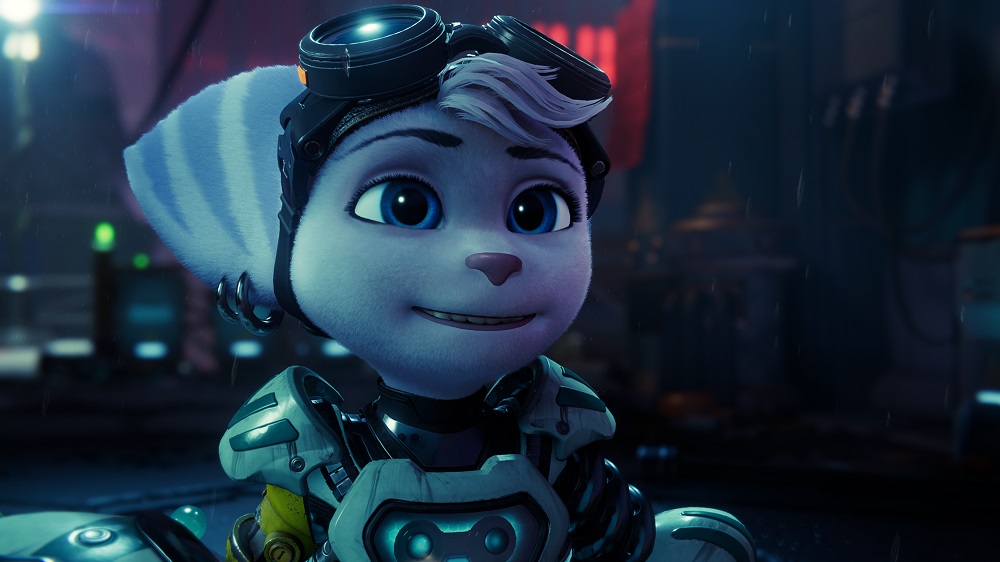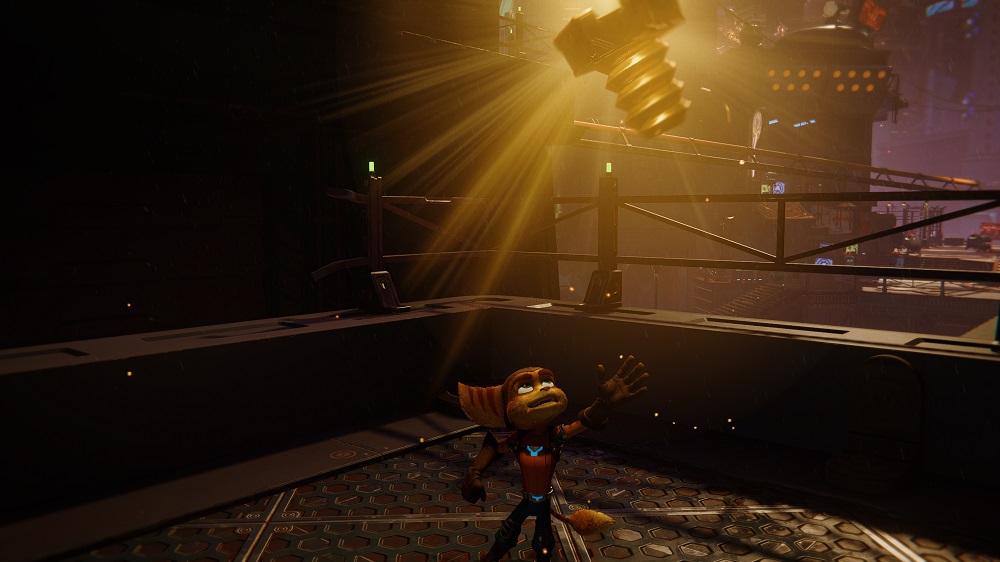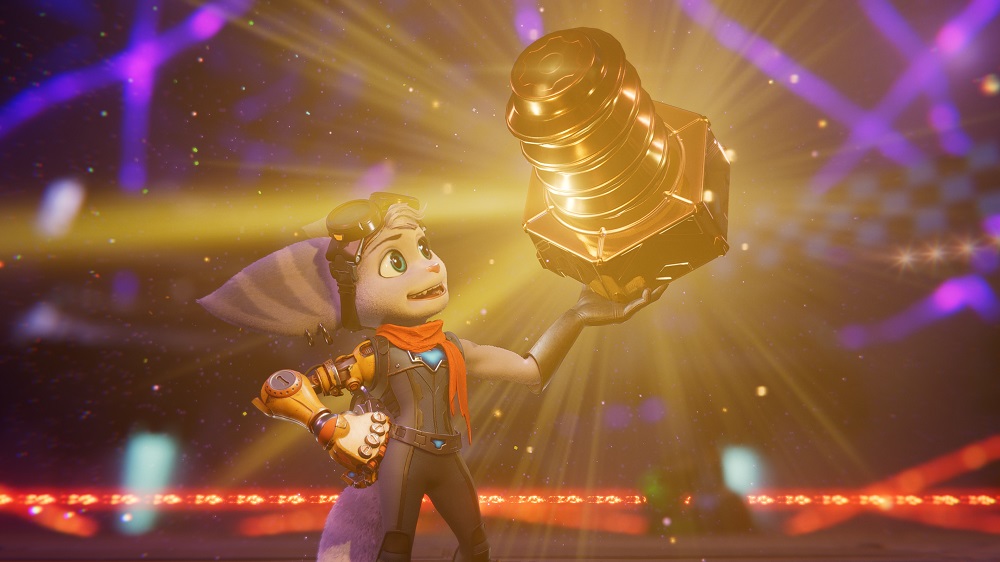Cue Ratchet & Clank: Rift Apart, one of those PS5 exclusives I mentioned. And without saying too much during this preamble section of the review, let’s just say that it ticks all the right boxes. And it’s done in a way that comes together really beautifully, rather than just crossing items off a checklist.
I diss graphics, but boy is this game beautiful.
Despite everything I said about the unimportance of graphics, I’ll admit that Ratchet & Clank: Rift Apart is the most beautiful game I’ve played this year. Which isn’t that many, I’ll admit, but this statement will likely remain true until Horizon Forbidden West comes about. But I digress. Back to graphics. Hypocritically, I think that Ratchet & Clank may not be as fun to play if it didn’t look as good as it did. As mentioned, the game is a perfect storm of not only getting all the right stuff in but also mixing them together perfectly. The other ingredients are good gameplay and a story that’s quite basic on the surface, but compelling enough to get you invested. There’s also a lot of other more subtle things that show the attention to detail that Insomniac Games have had for the game.
Graphics are not only impressive because things look pretty. They are impressive because you can be in one very pretty place, press a button, and immediately be transported to another pretty place, in a span of less than a second. Furthermore, the transition is always silky smooth, where in most cases you’d expect some jitteriness from the massive frame drops. This has to do with the super fast loading times of the SSD that we keep hearing about.
If it ain’t broke, don’t fix it.
Gameplay for Ratchet & Clank: Rift Apart is pretty standard fair for the series. It’s one of those “if it ain’t broke, don’t fix it” kind of situations. So rather than go for a massive overhaul, all that the latest instalment gets is minor increments. And really, that’s all that the game really needs. It’s one of those things you can really see why when you play it. As I’ve said before, it’s again all in the details. There are multiple weapon types in the game, almost all of which behave in their own unique way. And most amazingly is the unique reactions from enemies towards each weapon. You can see this in two ways.
For example, landing a hit on an enemy with the electricity gun will cause them to give out a good old cartoon electrocution effect. Y’know, the one where their bodies tense up and you see their bones like some sort of X-ray vision. But beyond that, once you’ve fired the weapon, enemies react accordingly and actually warn each other of the exact type of weapon you’re currently using.
Of course, the enemies themselves have pretty interesting lines during combat. Add the varying types of enemies depending on your location, and you have a combat experience that is certainly entertaining. I hesitate to use the phrase “combat loop” as I usually do though. This is simply because, while the whole package is a fun one, the novelty of the enemy dialogue lines wear off after awhile. That effectively removes one element of the combat experience that makes it so fun. As a result, replayability takes a hit. The varied weapons also comes with an interesting upgrade system. The more you use a weapon, the higher its level becomes. From there, you’ll be able to unlock various passive upgrades to increase their effectiveness. But upgrading isn’t free, as the currency you use to get these passive upgrades also act as one of the many forms of collectibles strewn around the game world. Buying the weapons themselves still involves bolts as the main currency, which you earn by breaking boxes and by defeating enemies in combat.
The DualSense is showing its magic here.
Being a PS5 exclusive, the game makes extensive use of the DualSense controller. While the haptic feedback remains something that words cannot express, the impressiveness of the adaptive triggers can at least be put into words. Most weapons have a form of secondary fire, and pulling the R2 button down halfway gets you this. Pulling it down completely gets you the secondary fire, which can be either a different firing mode, or stage two of a two-stage weapon mechanic. Occasionally, some weapons will also have something similar for the L2 trigger. Though imagination will make it obvious what sort of weapon will benefit from a secondary aiming mechanic.
Strewn in between combat sequences are platformer sections, and you can’t have a proper Ratcher & Clank game without these. There’s naturally a lot of platforming involved if you’re hunting down collectibles. A fair number are immediately accessible when you first get to a new area. Unfortunately, some still require backtracking once you get new abilities to give you more traversal options.
Rivet is introduced well, and probably the better protagonist.
Characters in the game are well voiced, each with their own personality. Though many of them are only encountered, or are only pertinent to your progression of the story, once. Which makes a lot of them quite forgettable.
Fortunately for the main characters, that’s not the case. Insomniac shocked fans of the series when it first introduced Rivet in the first ever Ratchet & Clank: Rift Apart trailer. And while I’m not particularly invested in the series, I dare say that Rivet has been introduced to the series quite well. I’d go as far as to say that she’s my favourite Lombax of the two. While Ratchet has the typical protagonist optimism to most things, Rivet seems more grounded about the bigger picture. Until things get hairy, no pun intended, and all caution goes out the window, just like Ratchet.
Though unfortunately, the way her introduction in this game was done is also a missed opportunity. Ratchet & Clank: Rift Apart sees you switching back and forth between the two. But gameplay wise, they are essentially carbon copies of each other. Combat moves, mobility options, they are all the same, even if some of them have different animations. Your upgrades are also shared, which may be a good or bad thing depending on your perspective. The game itself isn’t that long. I’ve spent maybe about 20 hours going through the story on the default difficulty, trying to get collectibles whenever I get to a new area and rarely backtracking. Once you’re done, you can either continue getting all the collectibles, or go for a New Game Plus to get more bolts to get better versions of your weapons. But because of the reasons I mentioned earlier, with a lot of the magic of the game being its novelty, replayability does take a hit.
Though ultimately, if you’re a fan of the Ratchet & Clank series, then you should get yourself a copy of Rift Apart. The game maintains the series’ usual magic, and also introduces another great protagonist in the form of Rivet. I won’t spoil, but I can safely tell you this: Insomniac isn’t done with the franchise just yet. You’ll see what I mean once you’ve progressed far enough into the game.
